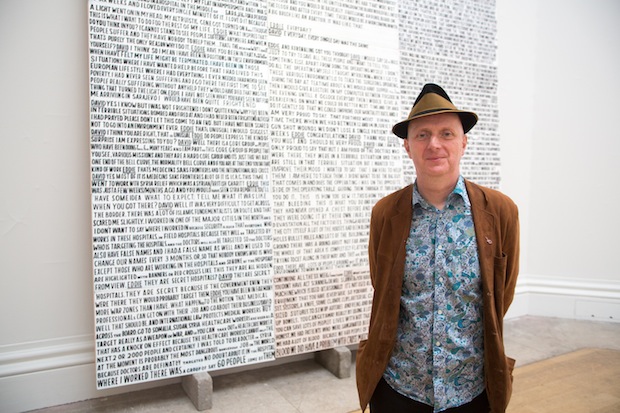Out there in the great ether there’s a whole new world of radio beyond the stations of the BBC and the FM dial. This week I found myself listening to a programme in Danish. I know. It sounds mad. But there I was glued to my computer screen reading the English subtitles while I listened to Stig and his helpers chatting away in Danish as they fitted him with a new set of teeth.
Stig’s Teeth (produced by Kim Hansen and Rikke Houd) was a runner-up in this year’s Sheffield Doc/Fest, which for the first time had an audio category. Doc/Fest was set up to celebrate the art of making documentaries, of telling stories, but only in film. At last, though, the organisers have recognised that (of course) ‘sound tells the best stories’. The award was curated by In the Dark, a radio-obsessed company that likes to take listeners out of their usual wavebands by organising ‘listening’ sessions in large venues, in the dark. Like going to the cinema but without the pictures.
It was a bit odd at first fitting together what I was hearing (from a computer link) with the stark line of words on my screen. But gradually the two melded into one and it was possible to appreciate the multilayered soundtrack of the programme — even though I couldn’t understand a word. Stig has been an alcoholic for years and has no teeth. We don’t know why. In fact, we never get to know what he looks like but there’s enough conversation about him for his character to come alive in the mind’s eye.
It’s a sad story. He lives alone, appears to have no family left, or friends. He no longer works. He’s lost his smile because without teeth the jaw sags and loses its muscle. The programme follows his visits to and from the dentist and conversations with the carer/social worker/nurse who comes to his flat and makes sure he turns up for his appointments. In the background in his flat the TV is on, endlessly replaying the disaster movie Titanic. You might think the soundtrack would take away from the conversation; actually it adds to the atmosphere. Stig is in a hole because of drink and is probably going to descend deeper into it; the captain and his passengers are doomed without knowing it.
The story Stig’s Teeth told was simple, giving us a slice through Stig’s life, but it was enough to make a powerful impact — even with subtitles. Much could be picked up from the tone of voice, the pauses, the hesitations, the moments of silence or the sound of an indrawn breath.
Last Christmas on PM Eddie Mair interviewed Dr David Nott, who had just come back from Syria where he had been working as a volunteer surgeon. Nott reduced Mair to shocked silence when he described the conditions of the secret hospital where he had been working. At the beginning of his day, he said, there was not a huge amount of blood. Just three or four units to give to the first patient, who was bleeding to death. But soon, as first one patient and then another’s blood fell on to the floor, Nott found himself squelching through the blood as he worked. A man with a broom came in to the operating theatre every so often to sweep the blood away. ‘Like an abattoir,’ said Nott, and the studio went quiet, Mair completely speechless.
I didn’t hear the interview at the time but my attention was drawn to it by an article in the Radio Times, which told how the artist known as Bob and Roberta Smith had been so affected by what he heard (the artist is actually one man named Patrick Brill) he decided to paint it, or rather to create a painting out of Nott’s words. Nothing more. Nothing less. (It can now be seen in the Royal Academy’s summer show.) The artist told RT, ‘I did not want it to fade,’ unlike most of the PM interviews, which are lost for ever once the iPlayer deadline expires. Actually there are other places to preserve bits of radio on the internet and you can still hear Nott’s extraordinary story on audioBoo.
More stories this week on Radio 4’s lunchtime feature (produced by Pennie Latin) as The Town Is the Menu took us to five towns around the UK in search of a signature dish that would define the town’s character. First stop for the presenter Simon Preston (who calls himself a ‘food innovator’) was Peterhead on the north-east coast of Scotland. David Littlewood was on board to create a rival to cullen skink and the infamous Forfar bridie, staple of many a student’s diet. He came up with Blue Toon Bree, a fish stew made from brown crab stock, spices, coley, whiting, monkfish, langoustines, curly kale and seaweed, ingredients inspired by Preston’s guests, the folk singer and storyteller Pauline Cordiner, Jimmy Buchan, a trawlerman, and Scott Donald, born in Peterhead, known as the ‘blue toon’ after the blue jumpers favoured by its fishermen. This is a series that could run and run, reinventing British cuisine.






Comments